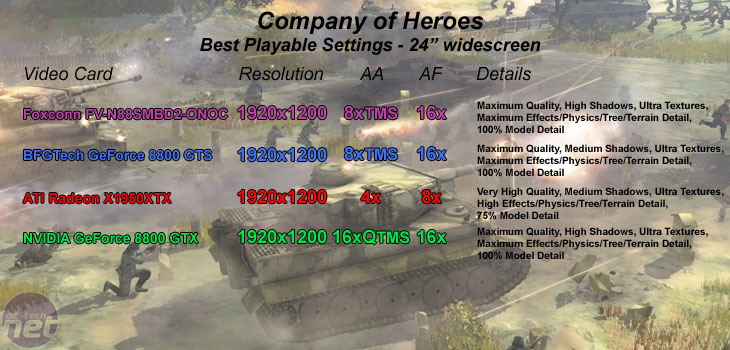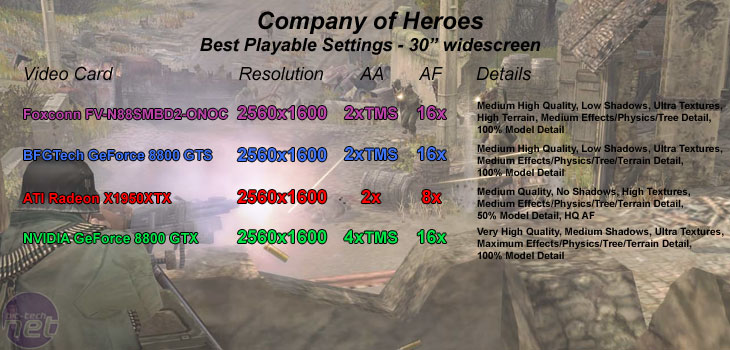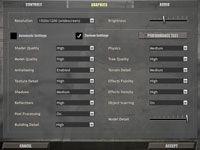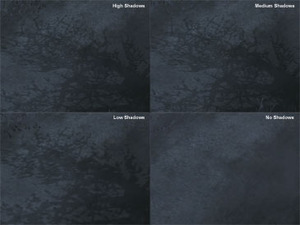Company of Heroes:
Publisher: THQWe used the full retail version of Company of Heroes patched to version 1.3.0. It's touted as one of the best real-time strategy games of all time. Not only is the gameplay incredibly good and immersive, the graphics engine is simply stunning, making extensive use of post processing and advanced lighting techniques in the fully destructible environment. It's also scheduled to get a DirectX 10 update sometime after the launch of Windows Vista.
The graphics already look superb, but with the additional performance benefits and image quality enhancements that DirectX 10 will bring, we're expecting it to look even better than it does now. Relic tells us that it plans to make extensive use of the geometry shader, with the addition of things like point shadows and also fuzzy grass support too. By fuzzy grass, Relic means grass that will have micro displacements that break up the detail in the base terrain texturing.
Relic also plans to leverage some of the other benefits to DirectX 10, to improve performance with more graphical features turned on. The developer's plan to add more detail into the world with more smaller object details in the world. Of course, all of these will react with the world and will be fully destructible like every other element in the Company of Heroes world. For our testing, we played a five-minute run through from the beginning of the Normandy level. There's heavy use of water, lighting, explosions and also masses of vegetation during the run through and it represents a 'typical' portion of single player game action.
________________________________________________________________________________
24" widescreen gaming:


NVIDIA's flagship 8800 GTX was simply in a different league to the other cards tested, thanks to the card being capable of smooth gameplay with the highest-available image quality to it. That's pretty incredible considering the relatively high resolution we're running this fairly recent title at.
The difference between medium and low is quite profound, but there's no clear difference in shadow quality when we increase the shadow setting from medium to high. It's possible that there may be some very subtle soft shadowing going on, as that could help to explain the incredibly small differences in quality.
________________________________________________________________________________
30" widescreen gaming:


Again, the 8800 GTX was in a different league to both Foxconn's and BFGTech's GeForce 8800 GTS video cards. It was capable of smooth gameplay with 4xAA enabled in conjunction with transparency multisampling - transparency supersampling is a big performance drain in this title, because it heavily uses alpha-tested textures to create reasonably realistic vegetation. However, in addition to the higher anti-aliasing quality, we were also able to increase effects, physics, tree and terrain detail to their highest settings, along with increasing shadow quality to medium.

MSI MPG Velox 100R Chassis Review
October 14 2021 | 15:04









Want to comment? Please log in.